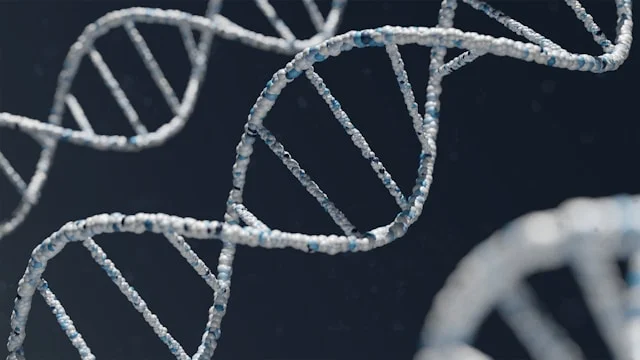
DNA testing has become a cornerstone of personalized health, offering insights into everything from disease risk and nutrient needs to ancestry and traits. Understanding the difference between genotyping and Whole Genome Sequencing (WGS) is key to knowing how much information you’re getting and how actionable it can be.
In this article, we’ll break down how each method works, what insights they provide, and which approach may be right for your health journey.
What Is Genotyping?
Genotyping is a common type of DNA test that focuses on specific spots in your genome called single nucleotide polymorphisms (SNPs). These are tiny variations in your DNA that scientists have linked to certain traits, health risks, and ancestry markers.
Because genotyping targets only known regions, it can provide fast and actionable insights into things like genetic predispositions to common health conditions, how your body processes certain nutrients, and ancestry and family heritage
Advantages of genotyping:
- Affordable and accessible: A cost-effective way to start exploring your genetics
- Quick results: Typically faster than sequencing your entire genome
- Proven insights: Focuses on well-studied genetic markers backed by research
Limitations:
- Covers only about 0.1% of your genome
- Limited to known variants. Rare or non-coding areas are not analyzed
- Insights may not grow in value as research advances
Genotyping is a great starting point for anyone curious about their DNA, offering valuable insights into key genetic traits and wellness factors, though it doesn’t capture the full scope of your genome.
What is Whole Genome Sequencing?
Whole Genome Sequencing (WGS) is the most comprehensive form of DNA testing available today. Unlike genotyping, which looks at selected points in your DNA, WGS reads your entire genetic code.
This technology decodes your entire genome, including areas that genotyping doesn’t capture, such as rare variants and non-coding regions that regulate gene activity. By sequencing your full DNA, WGS provides a complete and future-proof record of your genetic blueprint.
Benefits of Whole Genome Sequencing:
- Comprehensive coverage: Analyzes 100% of your DNA for a full picture of your biology
- Future-ready data: As research advances, your genome can be reanalyzed for new discoveries
- Deeper insights: Detects rare variants and subtle genetic factors that influence complex traits
WGS is used in advanced fields such as precision medicine, rare disease detection, and pharmacogenomics, as well as in personalized wellness platforms like SelfDecode.
While it’s more expensive and takes longer to process than genotyping, the value it provides grows over time as science uncovers more about the genome.
Key Differences Between WGS and Genotyping
Both genotyping and Whole Genome Sequencing (WGS) analyze your DNA, but the amount of data they capture and the depth of insight they provide are very different. Genotyping focuses on small, well-studied sections of your genome, while WGS reads every letter of your DNA, offering a far more detailed and flexible foundation for future discoveries.
Here’s how they compare:
| Feature | Genotyping | Whole Genome Sequencing (WGS) |
|---|---|---|
| DNA Coverage | ~0.1% of the genome | 100% of the genome |
| Data Depth | Focuses on known genetic variants (SNPs) | Captures all variants, including rare and non-coding ones |
| Insights | Established health, ancestry, and trait information | Comprehensive insights with room for new discoveries |
| Accuracy | Limited to known markers | Provides a complete, high-resolution view |
| Cost | Lower | Higher, but steadily decreasing |
| Processing Time | Faster | Longer, due to larger data volume |
| Reanalysis Potential | Limited—data doesn’t expand with new research | Can be reanalyzed as new genetic findings emerge |
| Best For | Quick, affordable health and ancestry insights | Long-term, in-depth understanding of your unique biology |
Why Data Analysis Matters: SNP Analysis vs. Polygenic Risk Scores (PRS)
While Whole Genome Sequencing captures more data than genotyping, the real power of genetic testing lies in how that data is analyzed. Two common approaches to interpreting your DNA are SNP analysis and Polygenic Risk Scores (PRS), and the difference between them can completely change the quality of your insights.
SNP (single nucleotide polymorphism) analysis focuses on individual genetic variants. It looks at specific “spots” in your DNA that have been linked to certain traits or conditions through past studies.
For example, one SNP might be associated with a higher risk of vitamin D deficiency or lactose intolerance.
While this method can be useful for identifying strong, well-established associations, it only considers one variant at a time, ignoring how multiple genes and variants interact with each other. That makes it a limited approach for predicting complex traits like heart disease, mood, or longevity.
In contrast, PRS looks at hundreds of thousands (or even millions) of variants together to estimate your overall genetic risk for a condition or trait. Instead of focusing on one gene, PRS uses advanced algorithms and machine learning to calculate how all your genetic factors combine to influence your health outcomes.
This makes PRS a far more accurate and modern approach, especially when it’s ancestry-adjusted and validated with large-scale studies.
For example, a PRS can tell you your personalized genetic risk for type 2 diabetes compared to the general population, allowing for earlier and more precise lifestyle interventions.
Even with high-quality sequencing, outdated or limited analysis methods can lead to incomplete or misleading insights.
That’s why the most advanced platforms, such as SelfDecode, combine Whole Genome Sequencing with advanced, ancestry-adjusted PRS and AI-driven data interpretation, ensuring the insights evolve as research does.
Read more: Why Advanced Polygenic Risk Scores Outperform Significant SNP Analysis
How to Choose Whole Genome Sequencing vs Genotyping
Choosing between Whole Genome Sequencing (WGS) and genotyping depends on your goals and how deeply you want to explore your genetic data. Both methods can unlock valuable health insights. The main difference lies in the level of detail and the type of analysis that follows.
If you want a cost-effective way to start understanding your genetics, genotyping offers a strong foundation. It analyzes hundreds of thousands of well-studied variants that influence key wellness areas such as brain health, cardiovascular function, metabolism, and more.
When combined with advanced analysis tools, such as AI-driven health reports and Polygenic Risk Scores (PRS), genotyping can already provide a powerful snapshot of your health potential.
For those who want the most complete and future-proof genetic data, Whole Genome Sequencing delivers an unmatched level of detail. It captures all 3.2 billion base pairs in your DNA, allowing for more comprehensive analysis, better detection of rare variants, and the flexibility to reanalyze your genome as research evolves.
At SelfDecode, both methods go far beyond raw data. Our advanced algorithms integrate your genetic results with lab tests, symptoms, and lifestyle data to provide personalized, science-backed health insights.
Conclusion
Both Whole Genome Sequencing and genotyping can reveal valuable insights about your DNA, but they are not the same.
Genotyping offers a good starting point for those curious about their ancestry or a few health traits. For those who want to take their genetic insights to the next level, Whole Genome Sequencing offers greater depth, precision, and long-term potential for reanalysis as science evolves.
By analyzing every base pair in your genome, WGS opens the door to advanced tools like polygenic risk scoring, AI-driven health insights, and personalized recommendations tailored to your biology.

